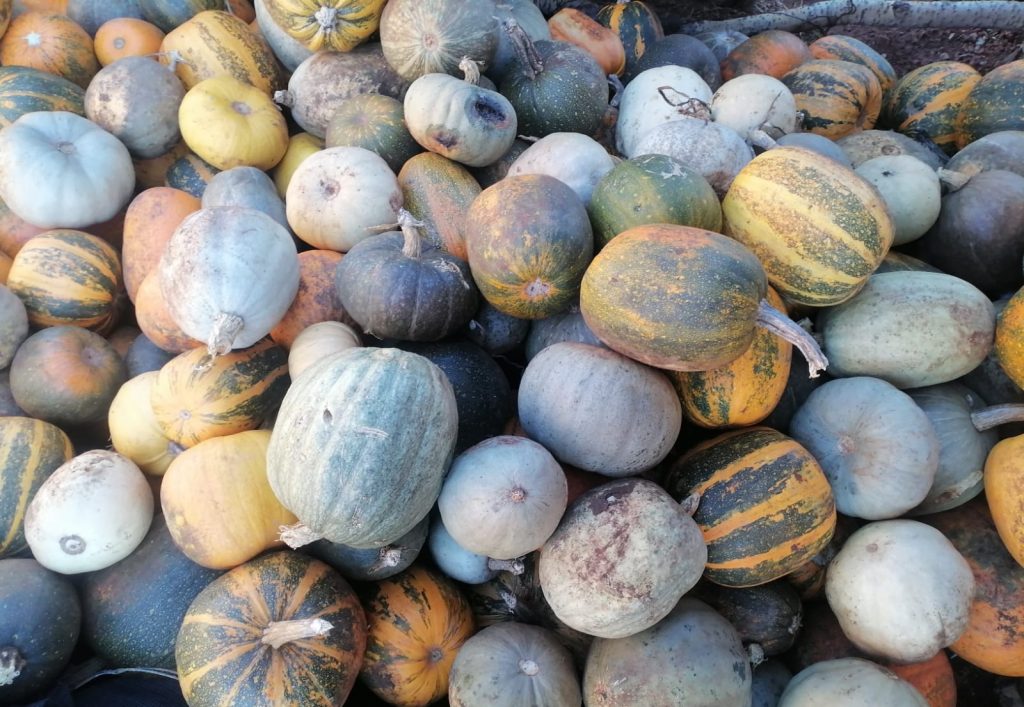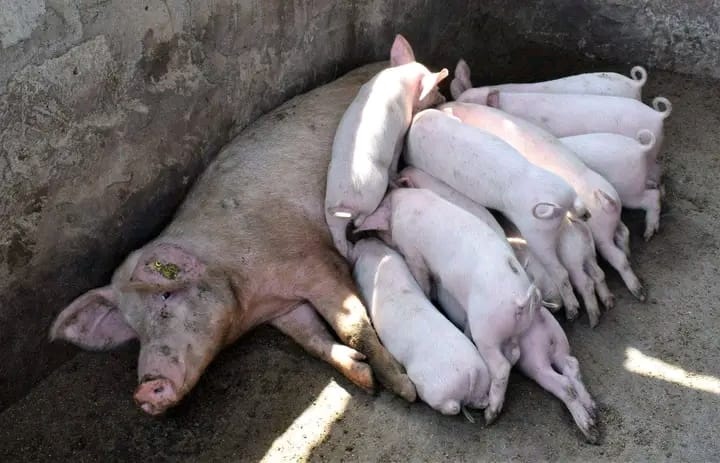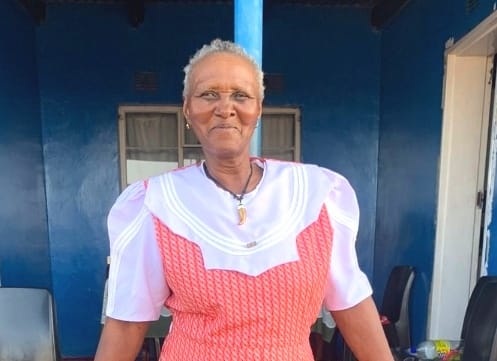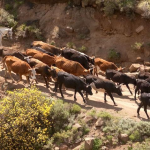![]()
Eighty-one-year-old Mamakhaola Peete rises before dawn each day to tend to her livestock and work her land, a routine she has followed since she married into the Peete family more than sixty years ago.
Her weathered hands, steady and skilled, tell the story of a lifetime of dedication to farming and the land that sustains her and her family.
Peete has devoted her life to agriculture not only as a means of survival, but as a foundation for her family’s progress.
Following the death of her husband, she narrates having to shoulder the responsibility of running the farm alone.
Through hardship and uncertainty, she says she has transformed farming into a source of resilience, raising and educating her children on the strength of the soil beneath her feet.
Though her journey began with subsistence farming, over time she transitioned into commercial production.
“My goats and sheep are the ones that bring in the most income through wool shearing,” she says, adding that wool and mohair provide regular returns, with buyers like BKB offering payments after shearing.
Testing different type of crop production to move with time, Peete says one of her proudest moments was being recognised as the best female pumpkin producer in her area — a title awarded by fellow farmers in the Berea district.
Firmly rooted in the heavy traditions of Basotho, Peete continues to use age-old farming techniques including intercropping, crop rotation, and organic composting choosing to produce organic.
These methods reflect her commitment to sustainability, enabling her to maintain the land without overreliance on chemical inputs.

“I learned to interpret the soil fluently and all the skills are self-taught,” she explains, noting that she practiced crop rotation long before the concept became widely known as a sustainable farming practice.
Her 15-hectare farm now supports a variety of livestock, cattle, goats, sheep, donkeys, pigs, and chickens, while her fields yield sorghum, maize, beans, pumpkins, and an assortment of vegetables.
“It is a home of agriculture vibrancy,” she says.
Looking back, she reflects that farming has always had its challenges, but today’s struggles are more intense.
She cites delays from the Ministry of Agriculture in providing seeds and fertilisers, as well as difficulties in accessing veterinary medicine.
“We are still waiting for winter seeds yet look at the time. If you are reliant on the government, you are in trouble,” she says, adding that there’s a pressing need for the government to help advertise wool and mohair so farmers can reach better markets beyond what is currently available.
She pointed out that climate change has only deepened these challenges noting erratic rainfall, rising temperatures, and prolonged droughts, “…all have taken a toll on my yields circle for both crops and animal farming.”

“The rains no longer come on time, sometimes they are too little or sometimes too heavy, both scenarios affects soil erosion and water scarcity. While we at times experience heavy rains, water scarcity has worsened, making it harder to maintain the farm’s productivity,” she says.
She adds that climate change effects have seen more pests and diseases outbreaks.
“Once manageable problems in terms of pests and diseases now come in waves of uncontrollable pandemics. They destroy more crops than they used to and kill more animals than before,” she explains, saying these all forced her to blend traditional knowledge with modern practices while maintaining organic management of the farm.
She notes that to advance education plays a pivotal role.
“I started adopting climate-smart agriculture techniques, using conservation practices such as likoti (planting basins) and the Machobane Farming System, both gaining traction among Basotho farmers for their ability to improve soil health and conserve moisture.
“I am learning new ways to protect my land, my animals and crops-mixing what I know with new methods to keep the farm strong and more productive,” she says.
From modest beginnings with just four workers, Peete’s farm has grown to employ fourteen people.
“I’m very pleased to have such committed people working alongside me. Their contribution has enabled me to increase my output and create a sense of shared purpose — not just for income, but for community upliftment,” she says.
With all her success, Peete feels a sense of loss that her children have chosen careers outside agriculture.
“I had hoped they would take over since I am not getting old,” she confides, pointing to photos of her son, now a nurse, and her daughter, a teacher.
She worries that young generations lack both the drive and the skills to grow their own food. “The world is changing and those who can’t produce for themselves may suffer and this is inclusive of my children who have and continue to show no interest in farming,” she warns.
To young people, she offers advice that ‘farming is a calling that demands daily attention’.
“A farmer is needed three times a day — morning, afternoon, and evening. Other jobs may fade with time, but food is always needed. A farmer’s work never ends.”
Her words are a rallying cry for younger generations to see farming not as a fall-back but as a noble and essential profession, one that requires persistence, learning, and deep care for the land.




